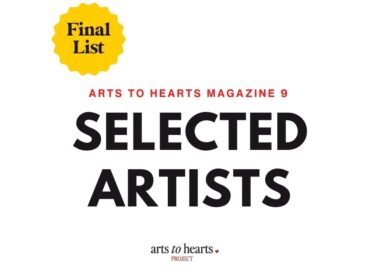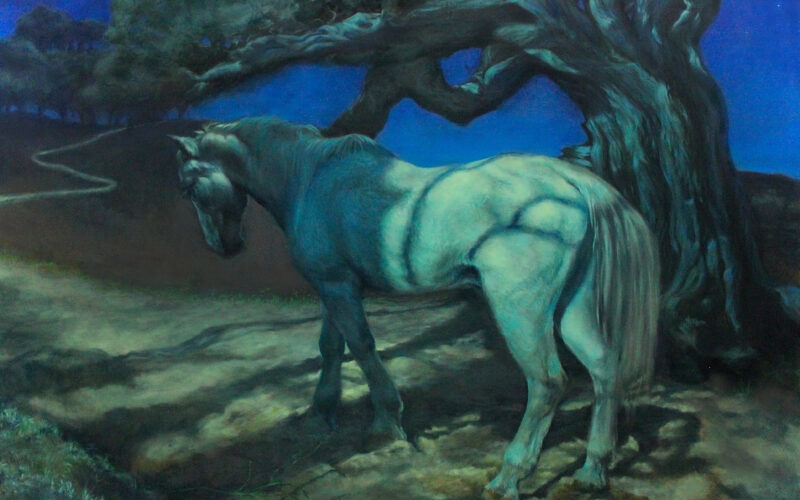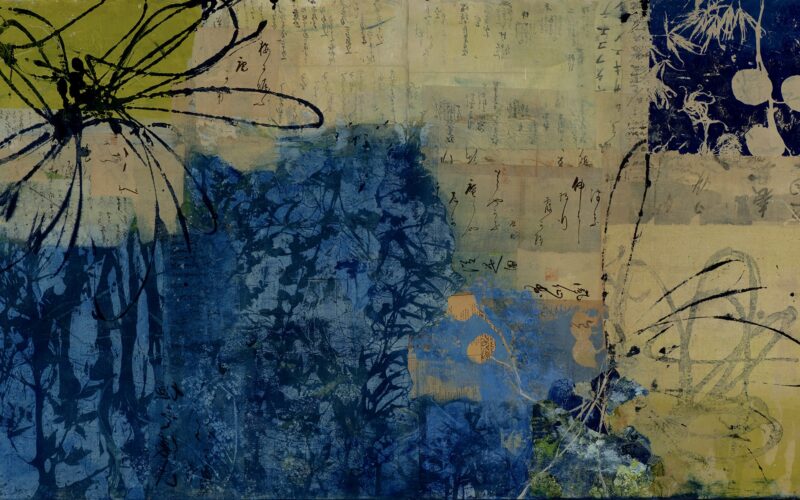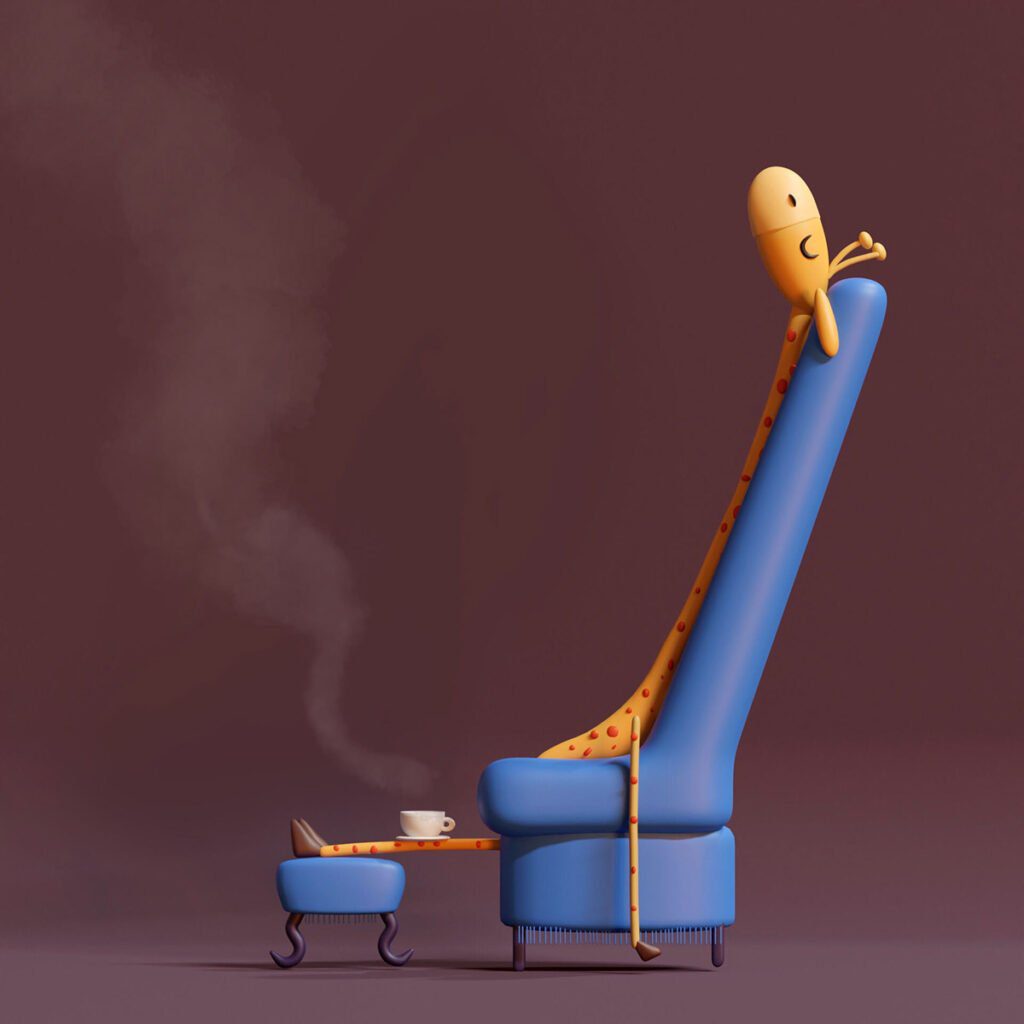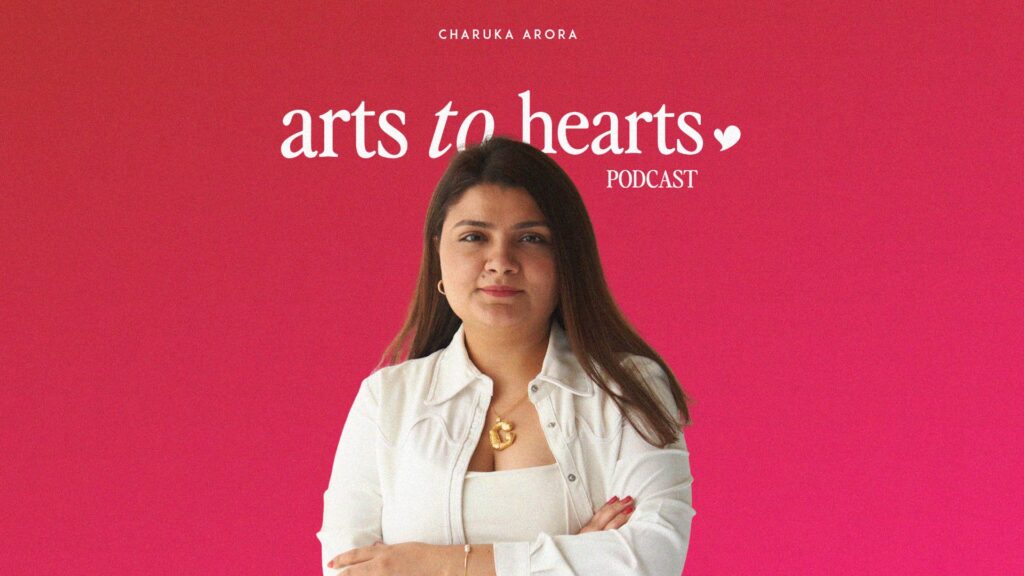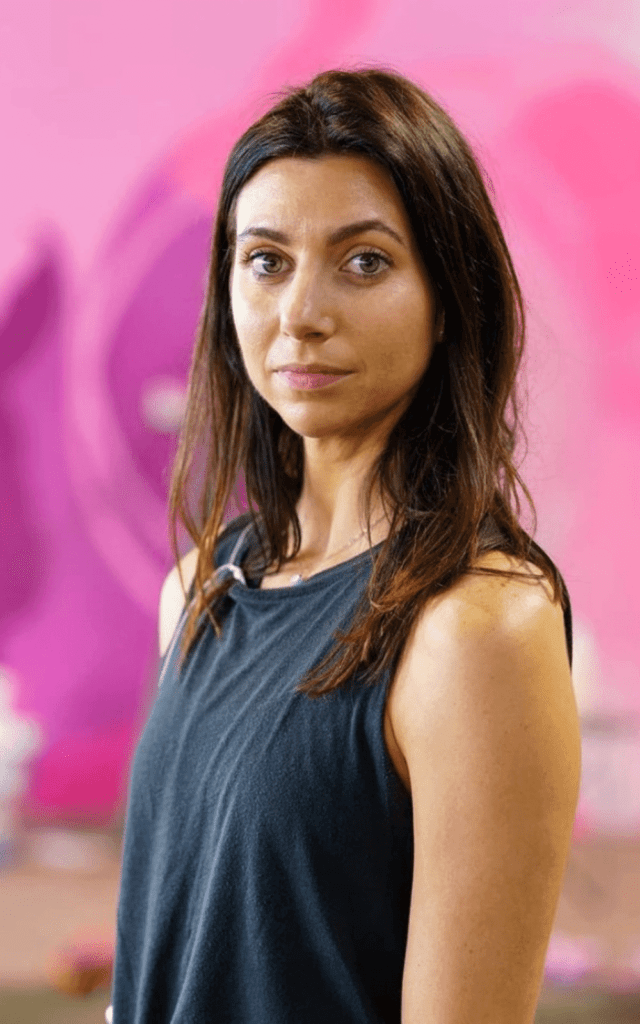

Watch & Listen to this podcast Episode.
In this episode of the Arts to Hearts podcast, host Charuka Arora interviews four artists that are published in the book 101 Art Book: Floral Edition. The guests include Amanda Inglis ,Kelly Angelovic ,Mahshid Farhoudi , and Marcela diaz . The conversation revolves around the themes of femininity, identity, and the role of women in the art world. Each guest shares their personal journey as an artist and how their work is influenced by their experiences as women. They discuss the challenges they have faced in the art world, the importance of empowering women’s voices, and the healing power of art, particularly through the subject of flowers. The guests also touch on the dismissive attitudes towards feminine art and the need to challenge societal expectations. Overall, the episode highlights the strength, resilience, and creativity of women artists.
| Timestamp | Summary |
| – | Empowering Women Artists in a Transformative Conversation |
| – | Artistic Journeys Through Personal and Societal Challenges |
| – | Flowers as Symbols of Healing and Hope in Art |
| – | Embracing Femininity and Healing Through Art |
| – | Empowering Women Through Art and Voice |
| – | Challenging Stereotypes in Art and Femininity |
| – | Embracing Vulnerability in Art and Leadership |
**** – How do you, um. Just now, we’re also talking about femininity and flowers. How do you feel, like, our role and identity? And I’m not saying identity in the sense of you being a woman in the art world. I’m also saying you being a woman and being an artist. I’m trying to articulate what the thoughts that are running through my head about that because I feel so strongly about empowering the voices of women. I’m sure we’ve all, like, heard or felt the comments, too. Kelly. Like, I went to a networking opportunity early on, and it wasn’t even all. It wasn’t for artists. It was small business owners. And I walked in the room and they said, oh, yeah. My experience also with that was, um, I think in order to get into galleries and, I mean, it’s been very challenging as a single mom of two kids and, um, being an artist and really trying to hold on to being an artist, in my particular case, that I am, um, kind of switching from energy to this other energy, actually to be like or to realize that I am a women artist. Hey, you guys. Welcome back to the arts to Hearts podcast. I am charukha, and I’m back with four amazing guests from none other than our upcoming book 101 art book. I’m very excited to introduce you to four amazing women artists who are publishing the book. And I am very excited to not only share their work, but the idea is to also know about who they are, what they do, the work they make, and also have fun in the conversation. Um, welcome to the podcast, Amanda. Ah, prema, uh, Mahsheet and Kelly. Hi. Thank you. Hello. Thanks for having us.
**** – In the meanwhile, let’s start with Amanda. Amanda, could you introduce yourself, who you are, what you do? Hello, everyone. I’m so happy to be here. Um, I’m an emerging artist this year. Um, I have been. I’ve had a brush in my hand since I was a little girl, but more in, um, I owned a spa, and I was doing wedding makeup for enormous bridal parties up to and just before COVID where that was obviously very hard on the spa industry and the aesthetics. So, uh, yeah, so I always had friends that would encourage me and say, when are you going to paint a canvas? Not a face? When are you going to paint a canvas? And I was, like, so intimidated by the fine art world. I had come from a theater degree early in my twenties, and I went, yeah. So I studied theater for four years in Toronto, Ontario. Um, and so at that time, I kind of said, I’m never going back into the fine arts again. That was. It was, um. It was very intimidating. It was a very hierarchical time where, um, no matter. There was no opportunities for self promotion, no matter how talented or skilled or the skills you developed. Um, everybody just told you when it was your turn and when it was your time to shine. So I said, I’m never doing that again. And then, um. So during COVID Yes, I was at home with my two year old. I was telling some of the girls earlier, and in that lockdown, I was the primary parent and at home with our little girl, and we took up gardening, and it just completely healed my heart and opened, you know, allowed me to feel safe and vulnerable. And for the first time, I finally took the paintbrush to the canvas and discovered painting florals and have just been going strong ever since. So the. So now I’ve, um. Thank you. Yeah, so now I’m, um. I am in May, um, at Wesleyan gallery in London, Ontario. Um, I am going to be participating in not only my very first gallery show ever, but, um, like, I’m in a group show with, um, a, ah, handful of very talented. Yes. Thank you. Thank you. So a handful of other floral artists that I was, um, last year, I attended the show, and I was actually scared to walk up to and talk to. And now I am in the show sharing the wall space with these girls. Isn’t it funny what a year can do? Thank you. Thank you. It’s been a whirlwind, but, um, it’s all about keeping that momentum going and keeping a positive, positive attitude and not letting any Athenians drive know, drive you in a direction. You kind of have to forge that path yourself, so. Yeah. Thank you so much, Amanda. That was a wonderful story and an intro, and I can’t wait to hear more from you.
**** – Who’s going next? Um, mashid or prema? Any of you? Uh, my name is Kelly Anjalovic. Um, I live in Boulder, Colorado, in the US. Um, I’ve been a working artist since about 2018. Eight. Um, I used to do a ton of licensing and hand lettering. Um, and in the last few years, it’s really evolved and shifted away from that into painting, which, um, just. I love the challenge of it. I love how hard it is, um, because it is hard every single day. Um, but there’s something about it that really speaks to my soul. Um, and so I do that, and then I also work with other artists as a coach, which is also really, really rewarding and awesome. Yeah. Yes. Empowering women is kind of, uh, where I’m coming from. Yeah. What about you? Uh, Prema? Do you want to join in? Yes. Hi, everybody. Nice to meet you. My name is Marcela, and my other name is Prema. That’s the one that I like useful more. I am from Costa Rica, and I’ve been painting, like, long time, like, for 30 years or something like that. But I had this. I, um, don’t know, I had this fear, uh, of not being good enough for a long time. So I decided that I had to go to the executive corporate world, that I can make it there like a man, you know? And I don’t need a man, so I can be a man myself. This is kind of weird in a women theme project, you know? But the thing is, like, thank God I’m changing, you know, I have been changing. And so I. I kind of always had the painting, but as, uh, a means of releasing, uh, all my voices, like, negative voices, you know? Like. Like, if I am depressed, I paint. If I am in love, I paint. If I am upset, I paint. And then. And then, well, I. And because of the corporate world, I went to Panama, and I lived there for almost eight years, and I painted there just in case of a crisis or something like that. But, uh, I think because of most of inner work that I have been doing, so I was able to quit the job that I was, came back to Costa Rica, and it’s been two years. And since I got back, I started painting, like, big time. Like, I cannot stop painting. So. But it’s also, like, the healing of coming back to my country, to myself, to my real self, to. Not the one that has to go to the corporate and, you know, and recovering also my. My feminine side. And. And when I did this, uh, set of flowers, it was like. Like an honoring to myself. So I don’t know if that happens also to you. I imagine you also have that. That when we start a painting, then all of the song, we start relating with that. And then, like, you paint, then you put it there, and then she comes back, and then you start, like, having this evolving, like, or evolution. I don’t know the word, like, in yourself. So that’s about it. So I just. Yeah, so it’s been, like a healing. Healing process. Yeah, I think that’s. I think a lot of us would relate to this, for sure. Okay. Mashi, do you want to go next? Sure. Uh, I guess I’m the one left.
**** – So, um, hello again. It’s really nice to meet everyone here and just, uh, to hear, like, your journey and how you where you are. It’s really, uh, fascinating. Uh, I have been painting and drawing forever. I started, I, uh, think it was like I was 13 or 14. I told my parents, this is what I’m m gonna do. And, uh, at the time, I lived in Iran and, uh, it was during the Iran Iraq war as well. I grew up with revolution and that’s war and eight years of it before coming to Canada without my parents at the age of 16. Um, but I always drew and, um, you know, coming from that society, I mean, a lot of societies similar, uh, you know, it’s like you either become a doctor or you become a nurse and engineer, and anything else is a disgrace. So I decided to be the disgrace. Uh, but I’ve always painted and flowers, it’s interesting because flowers has been an element that. And I call it an element because I’m not just. I’m actually more of a portrait and figure painter, but flowers have always been present because flowers, it’s like, even as a kid, I would go and pick flowers and come and sit and draw them. Uh, I would, you know, my, um, um, allowance for the month, I would use a little bit of my allowance to go buy flowers and do a setup and then paint from them. And it’s been an element that constantly comes in and out. And it’s, um, a safe subject for me. It’s a healing subject. Ah, it’s just like when I want to get away from a very heavy stuff, that’s where I go to. Um. So this last series that I’m working on is back to full on flowers. Uh. Um. It is gonna change. I know it’s gonna change. And it go into a combination of perhaps figure portraits and flowers. Again, um, I can’t just stay with it because, um, I’m so involved with, um, issues of healing, whether it’s been, um, mental health with children. I’ve done a whole series of, uh, children with portraits and animals or anything that. Animals that relate to them. Um, and then when COVID hit, I started actually working with military, um, well, canadian armed forces veterans, um, and active members who are suffering and living with PTSD. So that has taken on its toll on me. And there was no flower yet in one of my works. I actually dreamt that I am vomiting a flower. And I woke up and I. Yeah, I have that painting. Actually. It’s one of my. I did probably, I think, two self portraits that are with flowers coming out. And I actually had to walk around the neighborhood and think because I could feel it in my throat. And, uh, I woke up and I’m like walking around the neighborhood for a few days and all of a sudden I see this magnolia tree that was blooming. And I’m like, that is the flower. I mean, I still don’t know what’s the symbolism, but it’s okay because I don’t have to dig into it too much. It’s just what it is. And it became the voice of the wounded. So this, this. The flowers are, to me, are the voice, right? It is the voice of the wounded that needs to heal. You know, that, that, um. And the whole series is now going into being inspired by Rumi’s poem where it says, um, I, uh, bloom from. It’s blooming from the wound where I once bled. So it is, flowers are a healing. It’s a new birth, it’s hope. It’s all of those things that we need to be able to move forward. Um, and it’s just very. Thank you. Yeah, uh, it’s very much of that. And I know, um, in the art world, with the conceptual art world, especially when you’re dealing with public art versus commercial art and all that, it’s always a battle. And they’re like, oh, you’re just a chickadee painter or you’re just a flower painter. It’s like, well, flowers are not just flowers. Like, what do they symbolize? And it is very feminine. So, uh, being able to say, well, I am feminine, I want to remain feminine. It’s a feminine energy that heals. Uh, so why not celebrate? So it was wonderful. Yeah, it was wonderful to be in a, uh, group of women who all, ah, are true to that essence of femininity. So, uh, thank you for including me in the book. It’s wonderful. Thank you so much for sharing your work with us and sharing it with the world now. It’s our honor, for sure. It’s so interesting, you know, uh, this is a very, um, common topic conversation, but also very less spoken about. Um, I remember, you know, in the initial years, a lot of time artists and we’ve had this conversation within our own community and, you know, my own artist friends and everything. Like, you know, how, um, in the beginning people would say, oh, flowers are just for beginners, or you, you need to be more of a serious artist. On the contrary, I think it is so much more important. Like you both said, prema and Mashid, like, you know, it is so important as a healing part of us, like, what we paint is and the femininity. And I do definitely, uh, associate, um, how so much healing art brings, and it’s also, I don’t know how it works for men, but I really feel it does help me connect with my feminine side more specifically. Like, prema, you said, like, you know, we feel like we have to do this and that a lot of masculine energy versus when you get fluid in your art, it really gives you a lot of feminine energy, right? Yes. And I think that. I think that exploring feminine energy and being able to live in that space is. It’s quite vulnerable. I remember having my daughter coming from, you know, school and university and corporate, like you said, and push, push, push. And then I. When I had this little baby girl, I remember communicating to my husband, I don’t know how to nurture her because I don’t know how to soften myself enough in this new space, in this new, you know, in this new role as a mother. I. And then, um, I think, like you said, the symbolism and marsheed said, working with the flowers and, like, it softens you. You know, it’s like, it’s what we need that comes out of us. And at that time, I needed to learn how to let that armor go and learn how to be more vulnerable, to be the mother I wanted to be. So flowers kind of like, yeah, they come out of you as a symbol of that growth.
**** -I also want to talk a little bit about how do you, um. Just now, we’re also talking about femininity and flowers. How do you feel like, our role and identity. And I’m not saying identity in the sense of you being a woman in the art world. I’m also saying you being a woman and being an artist, um, does that impact your work, uh, how you think, um, your expression, the subject matter, what matters to you? For example, for me, um, a lot of my own work is extremely hyper influenced by being a woman. I like Mashid. I grew up in India, um, very patriarchal. Grew up in a setup where I saw women not being able to voice, um, very underrepresented, um, finding, like, I just never felt enough in the sense of how women were and are being treated. And that is why, even with arts to hearts project, I am deeply passionate, you know, doing, because I know one thing best is what it means to be a woman who does not feel represented or who doesn’t have a voice or not having a. And I feel like that has really shaped my life and my work as an artist. I want to understand your stories on your. How does that work for you all? I’m trying to articulate what the thoughts that are running through my head about that, because I feel so strongly about empowering the voices of women. Um, I was just reading a book called playing big by Tara Moore, and it’s all about, um, a lot of it is just encouraging women to, um, really trust those dreams that they have to go after what they want. And it talks about all of the socializing that gets in the way of that for us. But, um, the overarching premise of the book is that we are in this transitional time where the world for the past couple millennia has really been designed for men, by men. And we are in this time period right now where that’s starting to change and where we’re really. We can’t see the future, but we’re all trying to use our voices for a future that better serves all of our children, um, that serves everyone and not just white men. Um, and so I think a lot of my work is about that. It’s about empowering women. It’s about putting something beautiful out in the world. It’s about encouraging other women. Like, if I show up and I go after my dreams and I put my voice out there, that that, um, also will inspire other women to do the same thing and will help move us to this better world where we are all more equally represented. I’m sure we’ve all, like, heard or felt the comments, too, Kelly. Like, I went to a networking opportunity early on, and it wasn’t even all, it wasn’t for artists. It was small business owners. And I walked in the room and they said, oh, um, you must be the artist. And it looks like you paint flowers. That looks like it’s your subject, because I, you know, and I. Yes. Or, like, the average, you know, and it’s just like, oh, um. So, but that encourages you to, um. Or has encouraged me and my work to explore the strength and the resilience and the messaging behind. Well, it’s not just flowers. They’re not delicate, you know, the things that go to the environment that they. Not at all, right. The environmental challenges they go through to survive and thrive and just continue to burst and blossom and through such a short lifespan. And, um. Yeah, it’s, um, like you said, it’s us, uh, existing and walking into that, where that messaging has already been decided for us in the room, and we have to turn it around. Like, what’s wrong with. What’s wrong with, you know, as you’re labeling me the pretty girl that paints flowers, there’s more depth to that. But also there’s, I think, something also with femininity, because flowers are considered to be feminine and women who, um, look feminine, there’s a certain stereotype that feels like, okay, if you’re, you have this femininity, there’s a certain dismissal still that exists. Yeah. Yes, yes. Yeah. My experience also with that was, um, I think in order to get into galleries, um, I was working and I mean, it’s been very challenging as a single mom of two kids and, um, being an artist and really trying to hold on to being an artist while I’m teaching and providing for my kids and, uh, raising them by myself. Um, it’s, it was very difficult. And then going to galleries because I was also dealing with subject matters m that always deal with identity displacement and, uh, um, you know, survival of many things. Um, I had this whole series based on muslim women in exile. And I went forward with that to galleries. And, um, well, I lived in Ottawa for 20 years. I just moved to Scarborough. So Ottawa is also very conservative, very closed. And when it comes to the arts, it’s getting much better now. Um, but it was always very much dismissed because, oh, that’s too much of a cultural topic. Or don’t use, um, islamic symbolism, or don’t use middle, um, eastern patterns. All general, uh, in your work, it’s too, you can’t sell your work. We can’t sell your work. So I constantly have to change. And I would go back into my flowers. So I said, okay, I’m going to do this whole set of flowers. I did one full year. I produced in eight months. I did 22 paintings. And I went forward. I applied to 46 galleries. Three answered. And, um, one was, interestingly, we want number two and three and four in different colors reproduced. I’m like, it’s not a print shop. Yes. And then I had one gallerist in Ottawa who picked me up. Right, right. So I had, yeah, I had this one gallery who picked me up. And he was really good. And then he just, it, uh, was at the beginning. And then he says, but, you know, he heard my story about how I’ve come to Canada, how I’ve survived and all that stuff. And then he said, you come from the mouth of evil. Why are you painting flowers? So, uh, you know, that, how that ended up being, I’m not with that gallery anymore, but just a commentary. It’s like I can’t be feminine because, you know, or if I’m painting flowers, then it’s considered, you know, there is a dismissal of it. Yet the gallery wants you to, they don’t want to deal with other topics because it’s not sellable or it’s not. It’s not. It’s not a product that they can sell to people. So they’re looking for. And they’re like, oh, yeah, yeah. Like, stick with painting flowers because you can sell. And then when I, uh. When they get to know me, they’re, but why are you painting flowers? As if it’s not good enough? So being a female, also, it’s like, oh, you have two kids, and you’re a single mom. I don’t know if I want to pick you up because you’re not going to produce enough or, um. Um. It’s. It’s. It’s.
**** – It’s. Yeah, it’s. It’s been definitely a struggle to remain as an artist. I think what’s funny, too, is, from my background in theater, is there were these archetypes of women. When you study acting and characters, and with. When he or he or she, I don’t know, but when they made that comment, I hear you’ve been through such a hard time. We want the narrative of the warrior woman, the viking woman, the wonder Woman. We want to see that represented. We don’t want to see your delicate, feminine, the vulnerability that we don’t want to see that existing. We want to hear this story. And it’s always the like. Their notion of elevating women was to celebrate the hardness in them. And that’s what I got. The net I got caught in was, well, yeah, you survived better being the hardened one. I don’t know. No, I have. I. In Mike, in my particular case, that I am, um, kind of switching from energy to this other energy, actually, to be like. Or to realize that I am a women artist. Like, that has helped me a lot. Even in my current work, that I. That I work full, uh, time in logistics and management and so on. But, uh, only the perception that I change about myself, that I am really an artist, that I am sensitive, and I am vulnerable, and I want to inhabit my female energy. It has changed a lot. I mean, even, uh, my creation, so to speak, process not only for the canvas, but in my business, it has changed a lot. Like, how I treat people, how I. How I am more kind or try to be more kind or. So that. That has helped me a lot. And. And even, like, before, like, I didn’t tell nobody that I paint because I was kind of ashamed or, you know, because, you know, I was this powerful Margaret Thatcher, so speak women. And now I’m like, oh, I am having this exhibit, and I am actually exhibiting. And even with all that fear that I understand what Amanda said is this kind of.
About the Guest(s):
- Amanda Inglis: Amanda is an emerging artist who has been painting since she was a child. She previously owned a spa and worked as a wedding makeup artist before transitioning to fine art. Amanda’s work primarily focuses on painting florals, which she finds healing and empowering. She is excited to participate in her first gallery show and hopes to inspire other women to pursue their artistic dreams.
- Kelly Angelovic: Kelly is an artist based in Boulder, Colorado. She has been working as an artist since 2018, transitioning from licensing and hand lettering to painting. Kelly is passionate about empowering women and uses her art to encourage other women to pursue their dreams. She also works as a coach for other artists, helping them navigate the art world and find their own unique voice.
- Marcela diaz: Prema, also known as Marcela, is a painter from Costa Rica. She has been painting for over 30 years but initially pursued a career in the corporate world. After realizing her true passion for art, Prema returned to painting full-time and found it to be a healing process. Her work often explores themes of identity and self-expression, and she uses painting as a means of releasing her emotions.
- Mahshid Farhoudi:Mahshid is an artist who grew up in Iran and later moved to Canada. She has been painting and drawing since she was a teenager and has always had a deep connection with flowers. Mahshid Farhoudi’s work often combines portraits and figures with floral elements, and she sees flowers as a symbol of healing and hope. She has also worked with military veterans suffering from PTSD, using art as a means of healing and self-expression.
Episode Summary:
In this episode of the Arts to Hearts podcast, host Caruka Arora interviews four artists that are published in the book 101 Art Book: Floral Edition. The guests include Amanda Inglis , Kelly, Mahshid Farhoudi, and Marcela diaz. The conversation revolves around the themes of femininity, identity, and the role of women in the art world. Each guest shares their personal journey as an artist and how their work is influenced by their experiences as women. They discuss the challenges they have faced in the art world, the importance of empowering women’s voices, and the healing power of art, particularly through the subject of flowers. The guests also touch on the dismissive attitudes towards feminine art and the need to challenge societal expectations. Overall, the episode highlights the strength, resilience, and creativity of women artists.
Key Takeaways:
- The guests emphasize the importance of empowering women’s voices in the art world and society as a whole.
- Flowers are a recurring theme in the guests’ artwork, symbolizing healing, femininity, and resilience.
- The guests discuss the challenges they have faced as women artists, including dismissive attitudes towards feminine art and societal expectations.
- Art serves as a means of self-expression and healing for the guests, allowing them to explore their identities and emotions.
- The guests highlight the need for a more inclusive and diverse art world that celebrates and values the work of women artists.
Notable Quotes:
- “If I show up and I go after my dreams and I put my voice out there, that will inspire other women to do the same thing and help move us to a better world where we are all more equally represented.” – Kelly
- “Flowers are a healing. It’s a new birth, it’s hope. It’s all of those things that we need to be able to move forward.” – Mahshid Farhoudi
- “Being a female, there is a dismissal of femininity and a certain stereotype that feels like if you have this femininity, there’s a certain dismissal that still exists.” – Amanda Inglis
- “Exploring feminine energy and being able to live in that space is quite vulnerable.” – Marcela diaz
- “Flowers are not just flowers. They symbolize strength, resilience, and the ability to thrive despite challenges.” – Mahshid Farhoudi
Charuka Arora is the founder of the Arts to Hearts Project and Host of the Arts to Hearts Podcast. She is also an acclaimed Indian artist known for her contemporary embellished paintings. Her unique blend of gouache, collage, embroidery, painting, and drawing explores the intersection of art, culture, heritage, and womanhood. Through her work, she tells stories of female strength and encapsulates them in pieces that can be treasured for generations.

Charuka’s work draws inspiration from Hindu mythology, recognizing women as vessels of Shakti, the cosmic energy. She beautifully portrays powerful goddesses like Durga Maa riding a tiger or lion, symbolizing their unlimited power to protect virtue and combat evil.
Through her art, Charuka invites us into the world of women, showcasing their beauty, strength, and resilience. Her creations not only exhibit exceptional talent but also serve as an inspiration and a symbol of hope for those challenging societal norms.
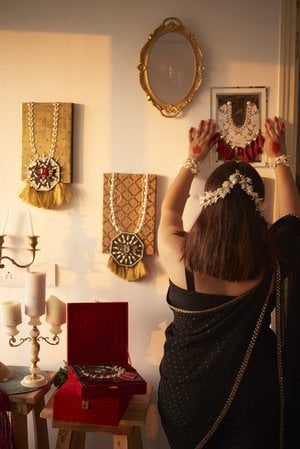
Arts to Hearts Podcast is a show delving into the lives and passions of renowned artists. From running creative businesses and studio art practices to cultivating a successful mindset, Charuka Arora engages in heartfelt conversations with her guests. Experience your personal happy hour with your favorite artists, right in your studio.
Through candid discussions, Charuka and her guests reveal the joys and challenges of a vibrant creative life, both within and beyond our studios. Get ready to be inspired and uplifted as you tune in.
Amanda Inglis
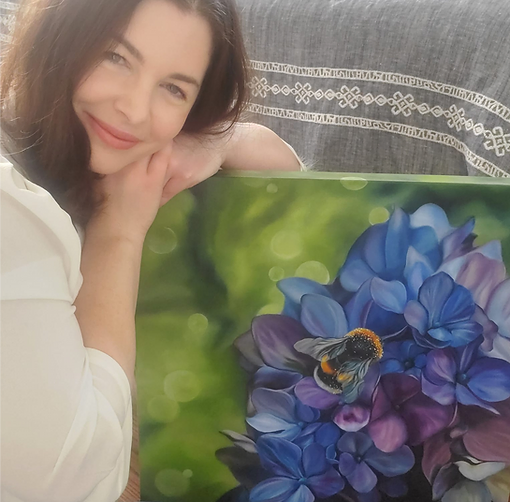
Amanda Inglis was raised on a farm just off the shore of Lake Erie, south of London, Ontario. At a young age, she became known within her small community for her insatiable curiosity for the creative arts. Her interdisciplinary mindset earned her a Bachelor of Fine Arts in Theatre Studies from York University.
Kelly Angelovic
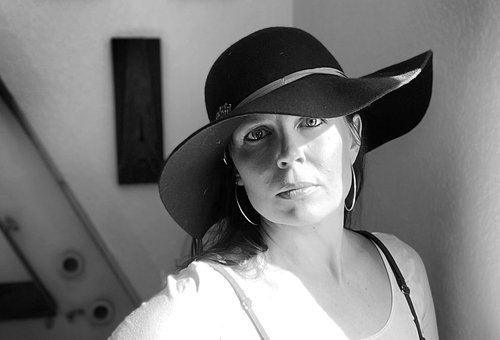
I’m an artist and creativity coach hailing from Boulder, Colorado where I live with my husband, our two kids (ages 7 & 10), and our dog Rooster. Specializing in painting, hand-lettering and surface design, I also play with editorial and book illustration.
When I’m not drawing or painting, I am often helping fellow artists design the creative life they’ve always imagined (it’s some of the most rewarding work I do).
Mahshid Farhoudi
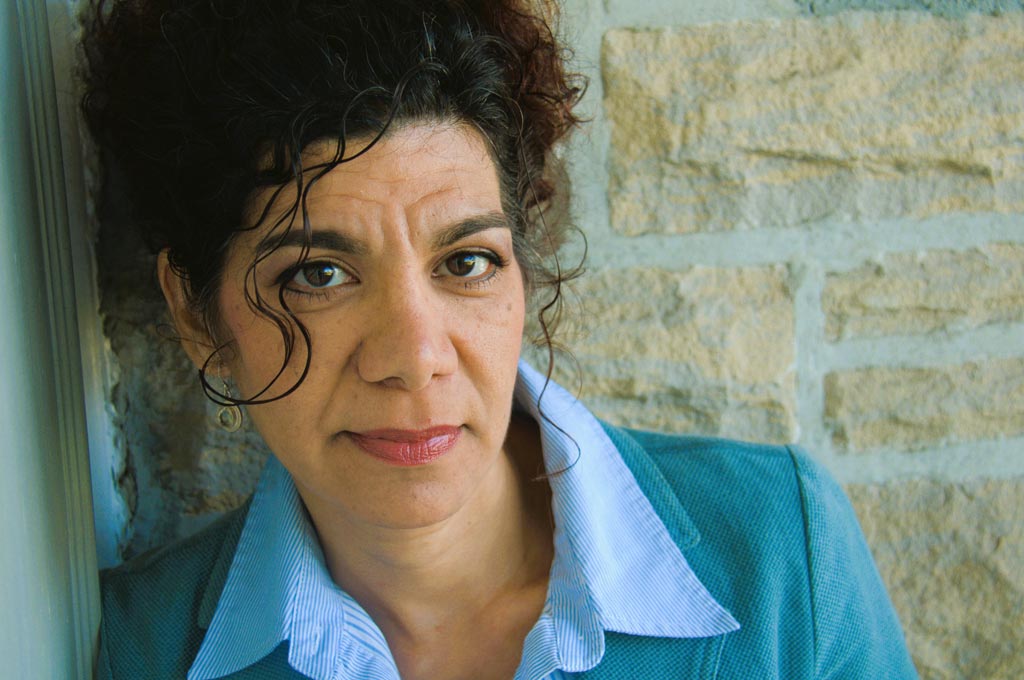
Mahshid’s journey into Art started at the age of fourteen after being admitted to the academy of Fine Arts in Tehran, Iran. Her studies were cut short due to the socio-political situation and the Iran-Iraq war, she fled Iran and arrived in Canada without her parents.
Mahshid is a graduate of Ontario College of Art and Design in Toronto, Canada with an additional year of studying traditional methods of paintings and drawing through Charles Cecil Studios in Florence, Italy.
She has exhibited in public and private galleried in Canada, US and Italy.
Marcela diaz

In the world of art, femininity and flowers have often been dismissed or relegated to the realm of beginners. However, for many women artists, these elements hold deep significance and serve as a means of empowerment and self-expression. In this thought leadership article, we will delve into a conversation among four women artists – Amanda, Kelly,Mahshid Farhoudi , and Marcela diaz – who discuss their experiences as women in the art world and the impact of their identity on their work. Through their stories, we will explore the themes of femininity, empowerment, and the challenges faced by women artists.
Embracing Femininity and Challenging Stereotypes
For women artists like Amanda, Kelly, Mahshid , and Marcela diaz, embracing femininity in their work is a way to challenge societal stereotypes and reclaim their power. Amanda, who initially felt intimidated by the fine art world, found solace and healing in painting florals. She discovered that flowers were not just delicate symbols of femininity, but also represented strength and resilience. Kelly, on the other hand, uses her art to empower women and challenge societal norms. She believes that by showing up and going after her dreams, she can inspire other women to do the same and create a more equal and inclusive world.
However, the journey of embracing femininity in art is not without its challenges. Women artists often face dismissive attitudes and are pigeonholed into certain subjects or styles. Kelly shared her experience of being labeled as a “chickadee painter” or someone who only paints flowers. This dismissal of feminine subjects and styles undermines the depth and complexity of their work. Mahshid, who has explored various themes in her art, including the experiences of Muslim women in exile, faced resistance from galleries that deemed her work “too cultural” or “not sellable.” These experiences highlight the need for a shift in the art world’s perception of femininity and the recognition of its power and significance.
The Healing Power of Art and Feminine Energy
Art has always been a means of healing and self-expression, and for women artists, it serves as a powerful tool to explore their feminine energy and reclaim their identities. Prema, who had previously pursued a career in the corporate world to prove her worth, found solace in painting as a means of releasing her emotions. She describes how painting became a healing process, allowing her to reconnect with her true self and embrace her femininity. Similarly, Mahshid uses flowers as a symbol of healing and new beginnings. She believes that flowers represent the voice of the wounded, offering hope and resilience in the face of adversity.
The act of painting itself becomes a transformative experience for these women artists. It allows them to tap into their vulnerability and explore their emotions. As Mahshid puts it, painting flowers softens her and helps her connect with her feminine side. This exploration of feminine energy not only influences their art but also impacts their lives outside the studio. Prema shares how embracing her feminine energy has changed her approach to her business and interactions with others, leading to a more compassionate and kinder way of being.
Overcoming Challenges and Empowering Women
Women artists face unique challenges in the art world, from societal expectations to the dismissal of their work. However, they are determined to overcome these obstacles and empower themselves and other women through their art. Amanda, Kelly, Prema, and Mahshid all share a common goal of using their voices to create a better future for all women.
Amanda’s experience of being dismissed as a delicate flower painter only fueled her determination to challenge these stereotypes. She believes that by showcasing the strength and resilience of flowers, she can inspire other women to embrace their power and pursue their dreams. Kelly, through her art and coaching work, empowers women to trust their dreams and go after what they want. She recognizes the societal barriers that women face but believes that by supporting and uplifting each other, they can create a more inclusive and equal world.
Breaking Barriers Through Artistic Resilience
Prema’s journey of embracing her identity as a woman artist has transformed her approach to her work and her interactions with others. She no longer hides her passion for painting and proudly exhibits her art. Mahshid, despite facing resistance from galleries, continues to explore themes that are important to her, such as the experiences of marginalized communities. These women artists are breaking barriers and paving the way for future generations of women artists.
The conversation among Amanda, Kelly, Marcela diaz, and Mahshid sheds light on the experiences of women artists and the impact of femininity on their work.
To read up more about Arts to Hearts Podcast and its episodes, click here.
Are you an emerging artist looking for a platform to showcase your work to the world? We are introducing Edition 1 of a stunning coffee table book that will showcase the biographies and creative journeys of 100 women artists from around the world, so submit your artwork here.
Call For Art: Art and Woman Edition 1-2024-https://submit.artstoheartsproject.com/art-and-woman-call-for-art/
Win US $10,000 worth prizes and cash award. So, have a look at https://submit.artstoheartsproject.com/emerging-woman-artist-award-ath-art-prize/
Listen to this & other episodes on










